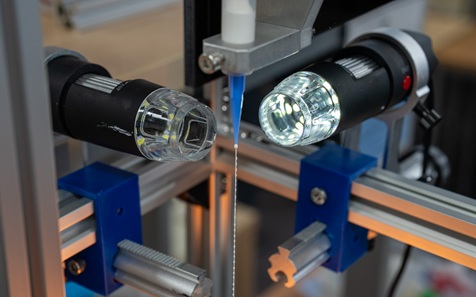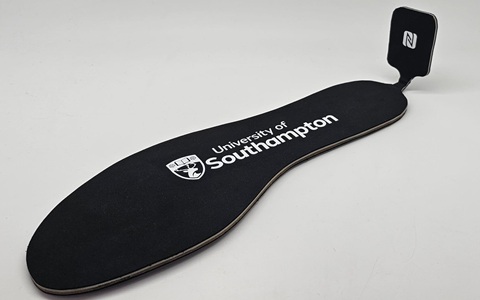.jpg)
Clothes that can monitor our health, help us in our day-to-day lives and enhance our entertainment experiences are being developed at the University of Southampton.
Scientists are working on a flagship project that will take e-textiles to the next level, with imperceptible and invisible wireless electronics integrated into textiles.
The possibilities are limitless but could include clothing for health and fitness monitoring, socks for monitoring gait, clothing to enhance virtual reality, and smart textiles for car interiors.
Experts in electronics, sustainability and textiles at the University of Southampton, alongside colleagues at the University of Glasgow, have embarked on a £10 million five-year project to address three challenges: making the electronics in textiles wireless and imperceptible, ensuring they withstand everyday wear and tear and washing, and making them sustainable.
Steve Beeby, Professor of Electronic Systems and Devices at the University of Southampton, said: "This is the first time researchers in electronics, sustainability, and textiles have joined forces from the beginnings of the design process, so everything we develop will take all needs into account from the early stages. That includes effective electronics, practical textiles, and all-round sustainability."

The researchers have already developed a bespoke machine for making electronic yarns and their state-of-the-art printing machine can print electronics at sub-micron (one thousandth of a millimetre) size.
While Southampton researchers are leading on textile manufacture and sustainability, academics at the University of Glasgow are leading on the wireless technology development.
Dr Mahmoud Wagih, Reader in Electronic and Nanoscale Engineering at the University of Glasgow, explained: "We will look at how to integrate electronics within fabrics wirelessly and invisibly, so they are imperceptible to the user. At the same time, we need to develop a means of separating the two for a sustainable end-of-life.
"Current examples of e-textiles are powered by batteries, which are bulky and obtrusive. We will research the use of wireless power transfer by picking up energy from radio waves, similar to RFID technology. And where an energy reservoir is needed, we will collaborate with the team turning the textile into a wirelessly rechargeable battery. It is possible to turn almost any fabric into a battery."

Smart bandages and smart insoles
The research team has created prototypes demonstrating the promise of the technology, including smart bandages that treat chronic and infected wounds, and smart insoles for diabetics.
The electronic insoles, developed by Innovation PhD student Michael John Lynch, are designed for people with diabetes who are at risk of pressure sores and ulcers on their feet due to nerve damage and poor circulation.
Insoles can provide cushioning and pressure relief, and the prototype smart insoles monitor wear and tear and pressure points electronically. They are battery-free, wireless and have been tested to withstand more than one million steps.
Professor Beeby said: "Diabetic patients are often given insoles to help prevent foot ulcers, but they wear out, so our smart insoles ensure timely replacement."
Sustainability
Sustainability is at the heart of the project. "Everything we develop will be underpinned by sustainability," said Ian Williams, Professor of Applied Environmental Science at Southampton.
"Textiles is the second most polluting industry in the world, after the petrochemical industry, and discarded electronics are also an environmental challenge.
"We are combining these two different industries, and we will do this in a sustainable manner by using eco-friendly and natural materials, and reusable and recyclable electronics."






